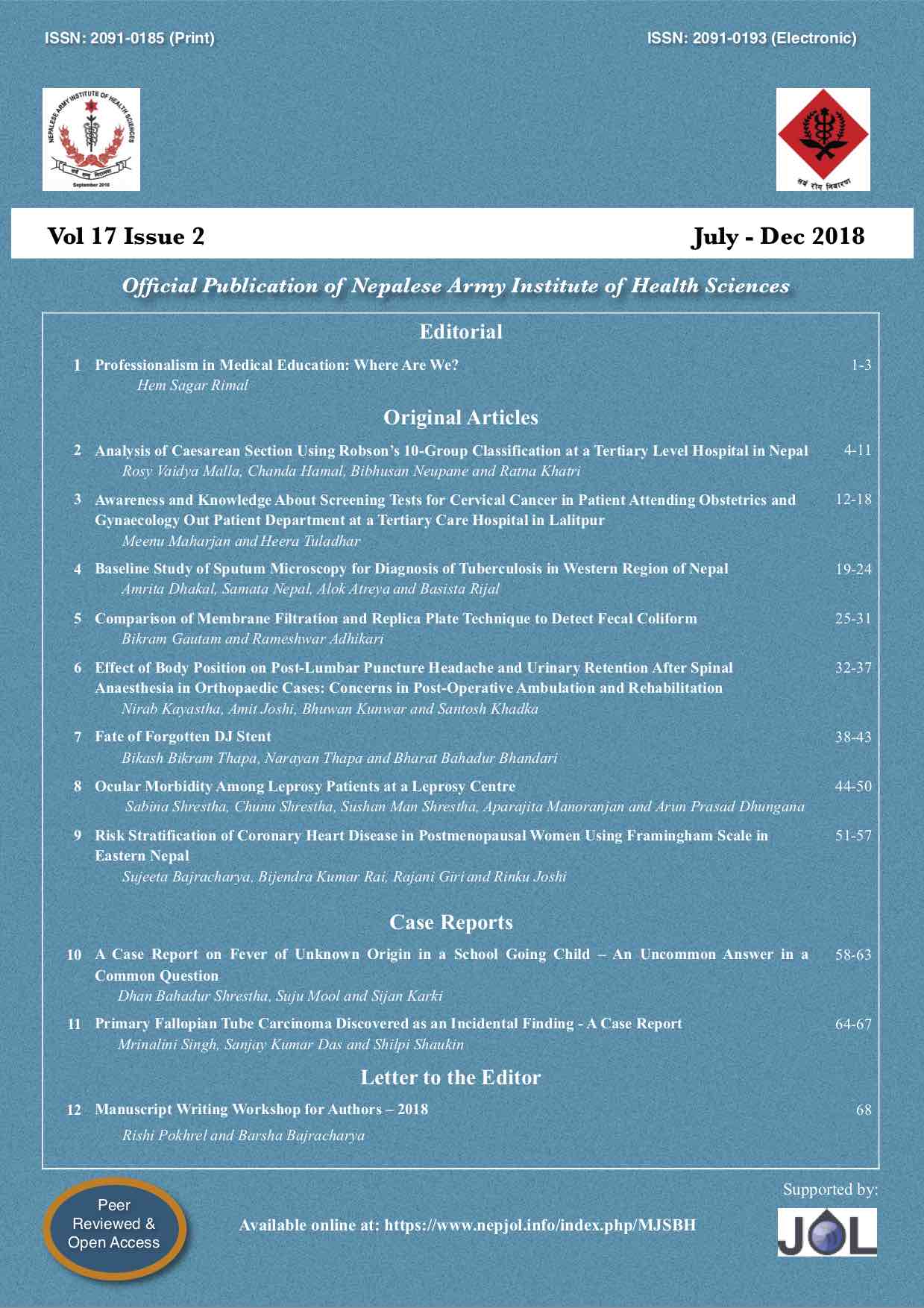Ocular Morbidity Among Leprosy Patients at a Leprosy Centre
Keywords:
Leprosy, ocular involvement, potentially sight threatening lesionsAbstract
Introduction: Leprosy is one of the dreaded communicable disease due to its profound morbidity. In earlier days in Nepal, a different settlement was designated for leprosy patient and their families. Khokana of Lalitpur district of Nepal is one of them. The study was conducted to determine ocular morbidity among leprosy patients who had completed multi drug therapy.
Methods: It was descriptive, quantitative and cross sectional study conducted at Khokana Leprosy Centre in Lalitpur district of Nepal. Leprosy patients who had completed multi drug therapy and consenting for the study were enrolled. Convenience sampling was done and the sample size was 70. After detail ophthalmic evaluation, socio-demographic profile of the participants and their ocular morbidities were documented and analysed.
Results: Major findings were superciliary madarosis (78.57%), ciliary madarosis (61.4%), different grades of cataract (67.10% right eye and 60% left eye), pseudophakia (30% right eye and 37.10% left eye), tylosis (44.3%), corneal hypoesthesia (10% unilaterally and 15.7% bilaterally) and dry eye (10%). Entropion was present in 2.9% both unilaterally and bilaterally. Ectropion was present in 5.7% unilaterally and 10% bilaterally. Trichiasis was present in 1.4% unilaterally and 2.9% bilaterally. Similarly, eyelid nodule was present in 7.1% unilaterally and 1.4% bilaterally. Incomplete closure of the lids was present in 8.6% unilaterally and 2.9% bilaterally. Exposure keratitis was present in 7.1% unilaterally and 1.4% bilaterally, corneal opacity in 2.9% unilaterally and 1.4% bilaterally and corneal perforation in 2.9% unilaterally. Chronic iridocyclitis was present in 2.9% cases. Retinal pearls were seen in 2.86% of cases. According to WHO criteria of blindness, 2.9% patients were blind in the present study. 14 persons were unilaterally blind and among them, two had severe visual impairment in the other eye, eight had other eye moderate visual impairment and four had other eye mild visual impairment.
Conclusions: Lid abnormalities, corneal abnormalities and cataract were the commonly encountered ocular morbidities among treated leprosy patients.
Downloads
Downloads
Published
How to Cite
Issue
Section
License
This license enables reusers to distribute, remix, adapt, and build upon the material in any medium or format for noncommercial purposes only, and only so long as attribution is given to the creator.




